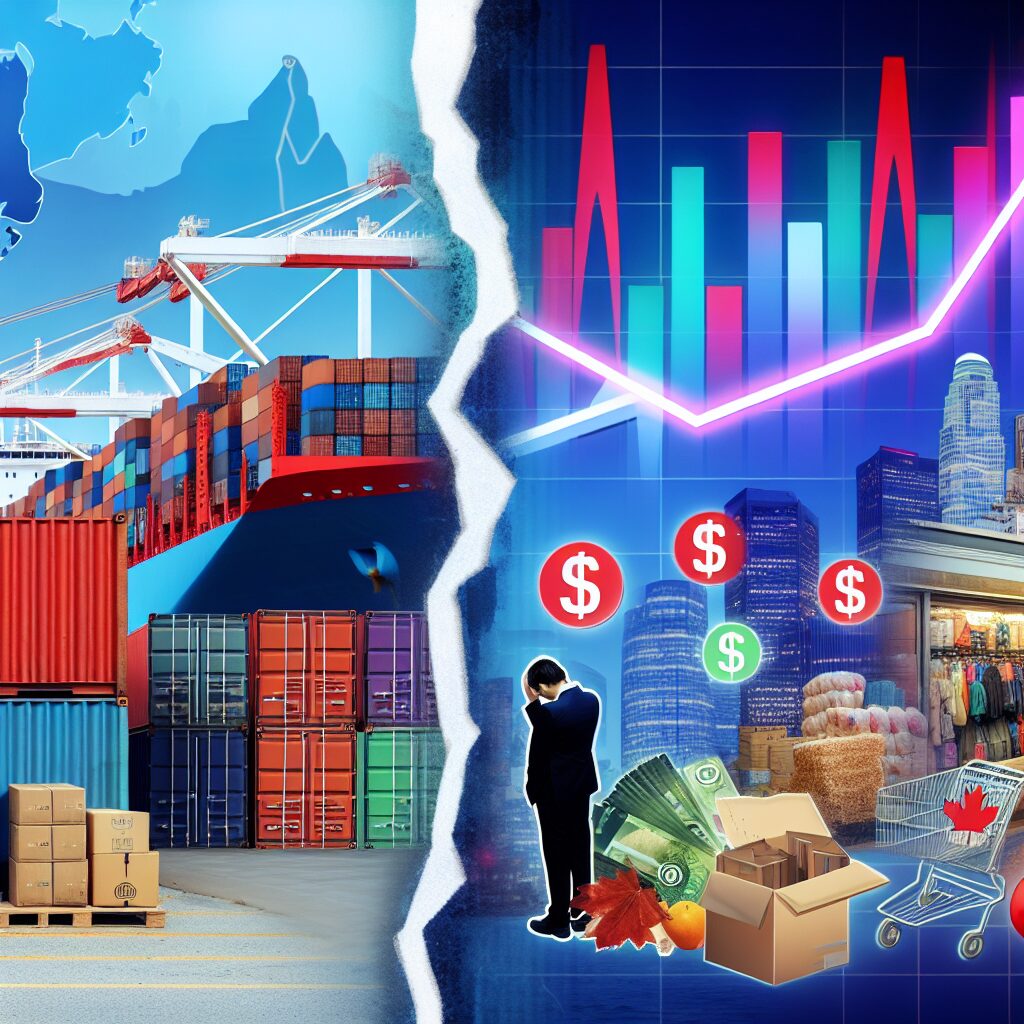How Trade Disruptions Could Impact Canada’s Fight Against Inflation
In an interconnected global economy, trade disruptions can have a significant impact on national economies, including Canada’s. As Canada battles rising inflation rates, understanding the relationship between trade disruptions and inflation is crucial for policymakers, businesses, and consumers. Trade disruptions can stem from various factors such as geopolitical tensions, natural disasters, pandemics, and policy changes. These disruptions can exacerbate inflation by creating supply chain bottlenecks, increasing production costs, and affecting consumer prices.
Supply Chain Bottlenecks
One of the primary ways trade disruptions impact inflation is through supply chain bottlenecks. When international trade routes are disrupted, the flow of goods and raw materials is hindered. This can result in delays, shortages, and increased costs for businesses. For instance, if a key component for manufacturing is delayed due to a trade disruption, production can slow down or halt entirely. This reduction in supply can lead to higher prices for the finished goods, contributing to overall inflation.
Increased Production Costs
Trade disruptions often lead to increased production costs for businesses. When companies face delays and uncertainties in receiving essential materials, they may need to find alternative suppliers, which can be more expensive. Additionally, transportation costs can rise due to rerouting or longer shipping times. These increased costs are often passed on to consumers in the form of higher prices, further fueling inflation. Industries heavily reliant on international trade, such as manufacturing and technology, are particularly vulnerable to these cost increases.
Consumer Prices
The impact of trade disruptions on consumer prices cannot be underestimated. When the cost of producing goods rises, companies may increase the prices of their products to maintain profitability. This trend can be observed across various sectors, from groceries to electronics. For example, if agricultural products face trade barriers, the cost of food items can surge. Similarly, disruptions in the supply of electronic components can lead to higher prices for gadgets and appliances. As consumer prices rise, the overall cost of living increases, contributing to inflationary pressures.
Policy Responses
In response to trade disruptions and their inflationary effects, policymakers often face difficult decisions. Central banks, such as the Bank of Canada, may consider adjusting interest rates to manage inflation. However, this approach can have its own set of consequences. Higher interest rates can curb consumer spending and business investment, potentially slowing down economic growth. On the other hand, failing to address inflation can erode purchasing power and reduce the standard of living for Canadians. Striking the right balance between controlling inflation and supporting economic growth is a challenging task for policymakers.
Geopolitical Factors
Geopolitical tensions can be a major driver of trade disruptions. Conflicts, trade wars, and diplomatic disputes can lead to tariffs, sanctions, and embargoes that disrupt the flow of goods between countries. For instance, if Canada faces trade restrictions from key trading partners, it can disrupt the supply of critical imports and exports. This can have a ripple effect on various industries, leading to shortages and price increases. Geopolitical stability is thus essential for maintaining smooth trade relations and preventing inflationary pressures from escalating.
Natural Disasters and Pandemics
Natural disasters and pandemics can also significantly disrupt trade and contribute to inflation. Events such as hurricanes, earthquakes, and global health crises can disrupt transportation networks, production facilities, and labor availability. The COVID-19 pandemic, for example, caused widespread disruptions in global supply chains, leading to shortages of essential goods and driving up prices. As Canada and other countries continue to recover from such events, the lessons learned underscore the importance of building resilient supply chains to mitigate future disruptions.
Building Resilient Supply Chains
To mitigate the impact of trade disruptions on inflation, businesses and policymakers can focus on building resilient supply chains. Diversifying suppliers, investing in technology for better supply chain visibility, and creating contingency plans can help reduce vulnerability to disruptions. Additionally, fostering strong trade relationships with multiple partners can provide alternatives in times of crisis. By taking proactive measures, Canada can better navigate the challenges posed by trade disruptions and maintain a more stable economic environment.
Conclusion
Trade disruptions have far-reaching effects on Canada’s fight against inflation. Supply chain bottlenecks, increased production costs, and rising consumer prices are just some of the ways these disruptions can exacerbate inflationary pressures. Policymakers and businesses must work together to build resilient supply chains and develop strategies to manage the impact of trade disruptions. By doing so, Canada can better navigate the complexities of the global economy and ensure a stable economic future for its citizens.
Source
https://ca.news.yahoo.com/bank-canada-says-trade-disruptions-121401237.html

